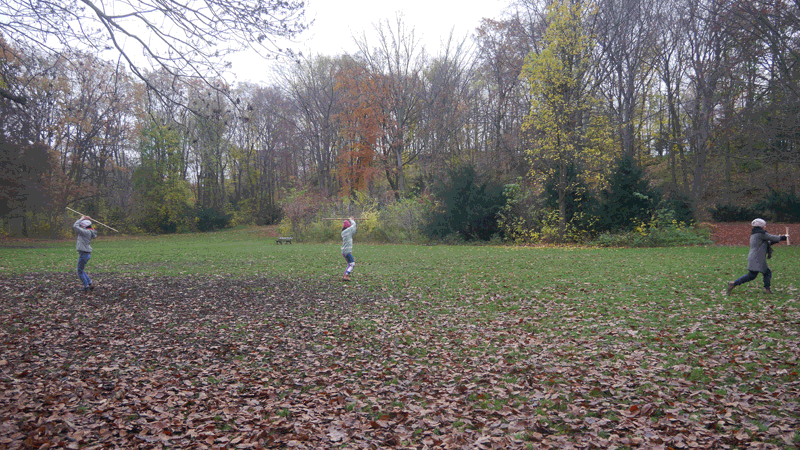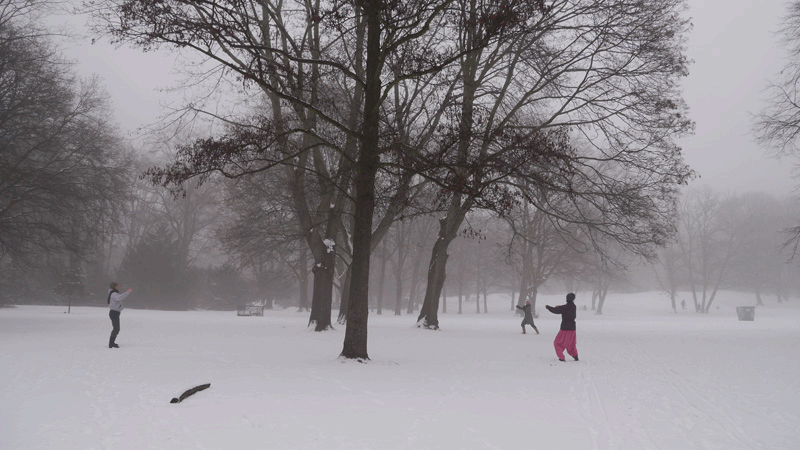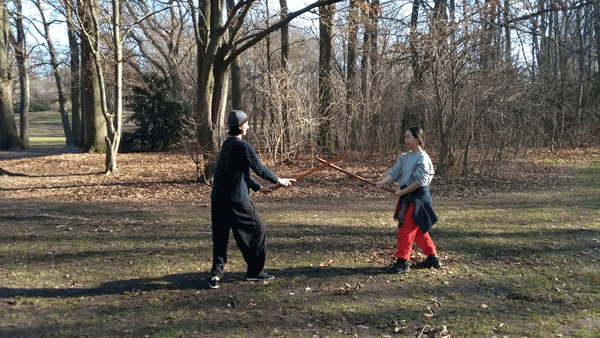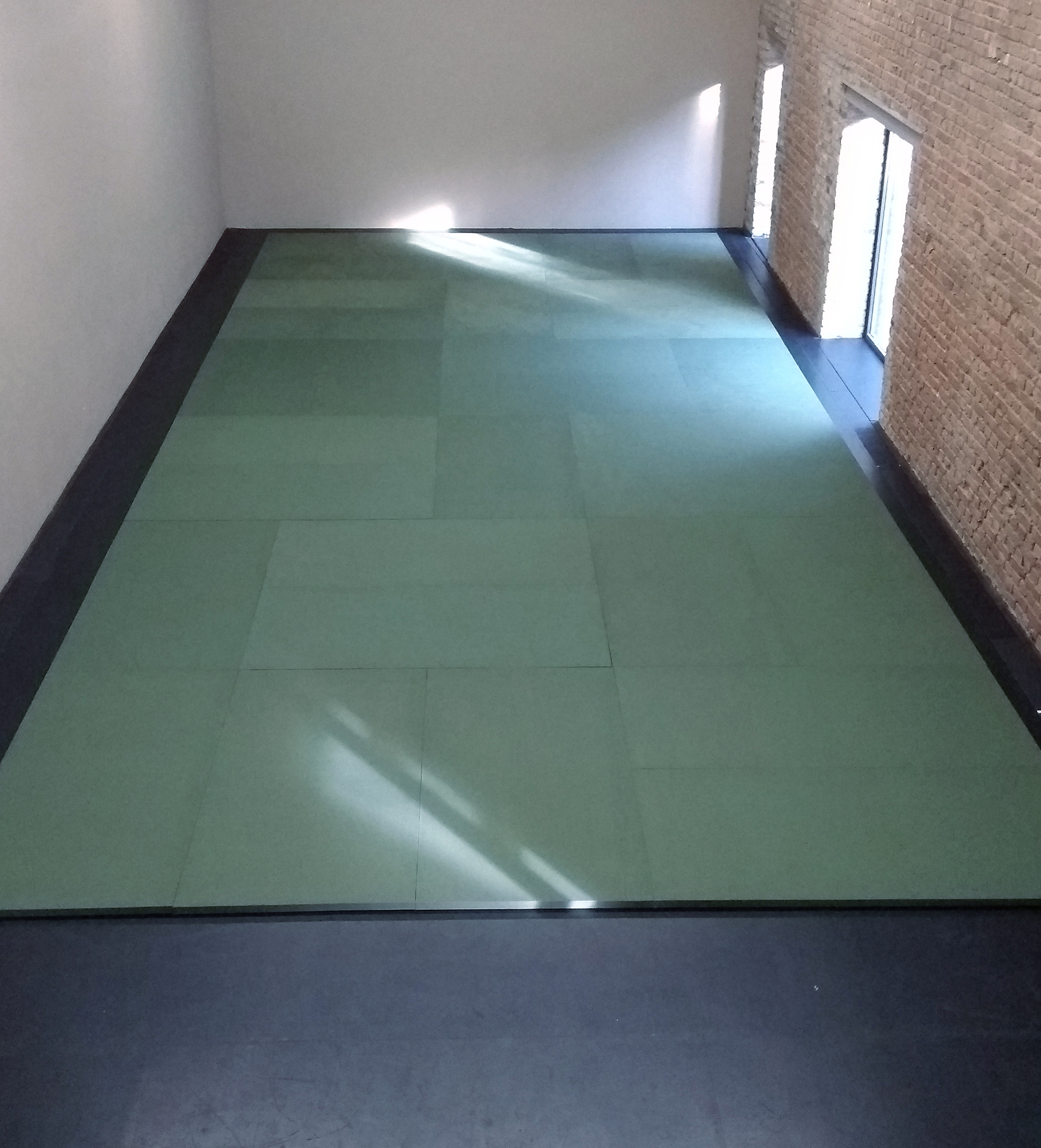Since the second lockdown began in November 2020, I have been giving practice sessions outdoors in the Humboldthain. The second lockdown hit us right before the premiere of two new solo pieces: Rotations, with Claudia Tomasi, and Knotting, with Francesca d’Ath, and it was such a sudden decision by the politicians that we had no time to realise what it really meant for us. There were only two options: either to fall into a real hole, or to look for new pathways, solutions, open doors and continue with ‘something’ that made sense, in itself and for one another.
One week later I began inviting all the dancers involved in the last three group pieces (the group-works trilogy) to new open practice sessions (OPS) outdoors in the Humboldthain. I asked everyone to write back beforehand, in order to stay within the rules, meaning small groups only – allowing us to practise whilst keeping distance. I wanted to offer something new and challenging to everyone, some aspects from my aikido practice: the work with the jo (wooden stick), which anyway needs lots of space in general, around oneself and one’s own hemisphere, and in between one another.
Very soon a core team of 4–8 people came on a regular basis, and the OPS consequently transformed into a daily practice in which we breathe together, sharpen our focus, practice our balance and weight shifts, and then learn every day new techniques and principles with the stick: how to let it be moved by our own movement and weight shift, and fluid clarity in axis and rotation. We don’t move the stick, we move ourselves for the stick to be in harmonious, undisturbed motion. The basic movement principles within ourselves, experienced in essence and practiced on a daily basis, made us advance quite fast. It was surprising how directly we could actually move from the understanding of the weight shift being the motor for the motion of the stick, and therefore also the motor for moving somebody else, to some of the actual aikido techniques – practised with the stick in the hand instead of grabbing the wrist of the partner – which allowed us to keep distance.
I now think that the circumstances brought us to an exciting way of learning aikido: all the techniques we practice by grabbing the wrist of the partner who moves us can be practised with the stick as a transition from hand to hand. The techniques as such are the same. It’s so clear with the stick where the technics are coming from. I’m looking forward to seeing how we will move on once contact is allowed again.
In a way the circumstances helped us find new ways of teaching and learning, of being together, and not least of knowing what we need to do: practising is not just a question of engagement and of contracts; it’s a real necessity for surviving in a healthy way. Surviving a situation that has become rather complicated for many people, for the cultural practices of building community and a sense of togetherness.
What do we need to stay healthy, in balance? It’s not just about not getting sick, but rather about finding out what we need in order to feel joy, to stay connected and clear in oneself and with others.
This brings me to the next important factor: practising outdoors wasn’t simply a solution that we found in order to stay within the rules; it was an opportunity, an enrichment and a real opening. The connection from self to the outside, sending your eyes out infinitely, is so much more clear in the vastness of the park than indoors, where walls are the first restriction to space. In a way everything seems so much more natural and evident; everything is connected. In nature it’s obviously there, but we are also part of nature, and as much as trees are connected through roots, a web of rhizome and plants, our own consciousness and presences are connected to the universe as well. And then: from human to nature, human to animal, human to human, hand to hand, eye to eye.
I can see this connection clearly within the practice: not only between us, but also in the way people in the distance are absorbed, how they watch or participate in copying some of the movements, or how they find their own way of moving with us. Some stop and ask if they can participate; some come with their dogs and move a bit. The dogs run behind the movements between our legs or when we’re bent forward, with stick or without, asking for their share. We watch the birds on the old trees where we found our islands for the practice. We watch the squirrels moving more elegantly than we could ever imagine being able to. And most of all things are peaceful: an inner quietness makes us love to do this practice every morning together. We learn new things: how to teach something new, how to learn a new technique, how to understand a movement through its essence and not only as a form. Yet most importantly the practice makes a real difference in how we feel connected. This can be understood as a sign of resilience, yes, but not primarily. It’s not about a sign and not about resilience; it’s about life itself, about the relation to the self, to oneself, from there to one another, to the world.
In a way it’s almost as if the relation to the self as free and open space, as consciousness, is the precondition for staying soft and kind with oneself/another, which always makes me remember one master’s words: it is when mankind becomes kind man. A beautiful sentence, I find, full of hope, empathy and respect.
I can see that the idea of open from the OPS became something else again: we are open to the world; we practise in a public space, open air; we allow for being watched, for people to be stimulated, affected or touched by it. We allow it to be open. True, the invitation by mail was less open in the sense of outreach, but in reality the practice we do is more open, as everyone around can be affected by it. And it happens by itself: life organises itself, takes care of itself. It’s less controlled. I love it. The OPS are a little chameleon; they adapt, change colour, but stay alive and grow. The OPS became a daily training, something less punctual, less announced, but rather quotidian: a necessity as such. The idea of Zen is really present.



